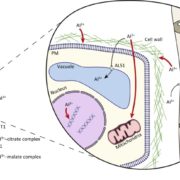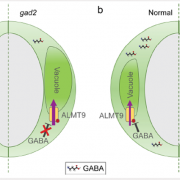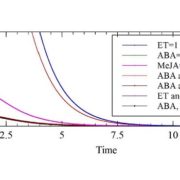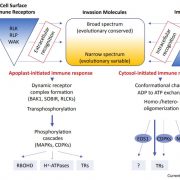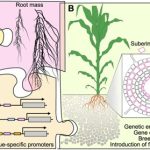Perspective: Multiple mechanism behind plant bending
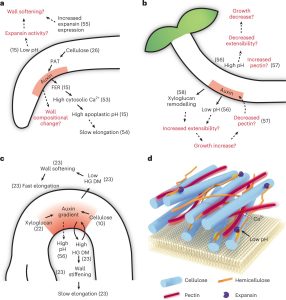 Bending or folding in plants is influenced by different factors such as environmental conditions (nutrient, water, light, gravity), abiotic or biotic stress, cell wall properties, and cell differential growth. Jonsson et al. explain how bending is achieved by considering molecular mechanisms, mathematical models, and biophysical aspects. The plant bending process can be classified into ‘fountain-like’ and ‘hinge-like’ bending, with the difference being the cell dynamic of the bent region over time; in hinge-like bending, the same cells always occupy the site of bending, whereas in fountain-like bending the curved region is displaced in the organ over time. The apical hook (which forms when the hypocotyl bends) is an example of ‘fountain-like’ bending, with bending enabled by differential cell growth on the outer and inner sides. The phytohormone auxin has been suggested to play an essential role in the initial bending of the apical hook, together with cell wall components. Moreover, ethylene, brassinosteroid, and gibberellin signaling also can be involved in the tissue bending process. In addition to biochemical signals, mechanical signals such as turgor pressure and mechanical conflicts between cells and tissues complement the folding complexity in plant cells. Mathematical models can help us to understand cellular mechanisms regarding biochemical and mechanical signals. This review provides an overview of bending mechanisms at different levels of regulation along with perspectives to understand the folding process. (Summary by Andrea Gómez-Felipe @andreagomezfe) Nature Plants 10.1038/s41477-022-01310-y
Bending or folding in plants is influenced by different factors such as environmental conditions (nutrient, water, light, gravity), abiotic or biotic stress, cell wall properties, and cell differential growth. Jonsson et al. explain how bending is achieved by considering molecular mechanisms, mathematical models, and biophysical aspects. The plant bending process can be classified into ‘fountain-like’ and ‘hinge-like’ bending, with the difference being the cell dynamic of the bent region over time; in hinge-like bending, the same cells always occupy the site of bending, whereas in fountain-like bending the curved region is displaced in the organ over time. The apical hook (which forms when the hypocotyl bends) is an example of ‘fountain-like’ bending, with bending enabled by differential cell growth on the outer and inner sides. The phytohormone auxin has been suggested to play an essential role in the initial bending of the apical hook, together with cell wall components. Moreover, ethylene, brassinosteroid, and gibberellin signaling also can be involved in the tissue bending process. In addition to biochemical signals, mechanical signals such as turgor pressure and mechanical conflicts between cells and tissues complement the folding complexity in plant cells. Mathematical models can help us to understand cellular mechanisms regarding biochemical and mechanical signals. This review provides an overview of bending mechanisms at different levels of regulation along with perspectives to understand the folding process. (Summary by Andrea Gómez-Felipe @andreagomezfe) Nature Plants 10.1038/s41477-022-01310-y



